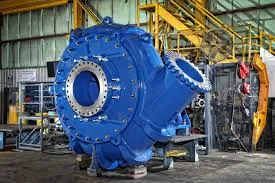Malayalam
- Afrikaans
- Albanian
- Amharic
- Arabic
- Armenian
- Azerbaijani
- Basque
- Belarusian
- Bengali
- Bosnian
- Bulgarian
- Catalan
- Cebuano
- Corsican
- Croatian
- Czech
- Danish
- Dutch
- English
- Esperanto
- Estonian
- Finnish
- French
- Frisian
- Galician
- Georgian
- German
- Greek
- Gujarati
- Haitian Creole
- hausa
- hawaiian
- Hebrew
- Hindi
- Miao
- Hungarian
- Icelandic
- igbo
- Indonesian
- irish
- Italian
- Japanese
- Javanese
- Kannada
- kazakh
- Khmer
- Rwandese
- Korean
- Kurdish
- Kyrgyz
- Lao
- Latin
- Latvian
- Lithuanian
- Luxembourgish
- Macedonian
- Malgashi
- Malay
- Malayalam
- Maltese
- Maori
- Marathi
- Mongolian
- Myanmar
- Nepali
- Norwegian
- Norwegian
- Occitan
- Pashto
- Persian
- Polish
- Portuguese
- Punjabi
- Romanian
- Russian
- Samoan
- Scottish Gaelic
- Serbian
- Sesotho
- Shona
- Sindhi
- Sinhala
- Slovak
- Slovenian
- Somali
- Spanish
- Sundanese
- Swahili
- Swedish
- Tagalog
- Tajik
- Tamil
- Tatar
- Telugu
- Thai
- Turkish
- Turkmen
- Ukrainian
- Urdu
- Uighur
- Uzbek
- Vietnamese
- Welsh
- Bantu
- Yiddish
- Yoruba
- Zulu
Telephone: +86 13120555503
Email: frank@cypump.com
ഡിസം . 25, 2024 16:35 Back to list
plumbing sewage ejector pump
Understanding Plumbing & Sewage Ejector Pumps
In the world of plumbing, the term sewage ejector pump frequently surfaces, particularly when it comes to managing wastewater from homes and buildings. These specialized pumps play a crucial role in ensuring that sewage and other wastewater are efficiently removed and transported to the municipal sewer system or a septic tank. Understanding how sewage ejector pumps work, their components, and their applications can help homeowners make informed decisions regarding their plumbing needs.
What is a Sewage Ejector Pump?
A sewage ejector pump is a type of submersible pump specifically designed to handle and transport sewage and other solids from lower elevation areas to a higher elevation sewage system. Unlike standard sump pumps, which primarily handle water, sewage ejector pumps are built to manage sewage and waste materials, making them essential for homes where gravity drainage is not an option.
How Does a Sewage Ejector Pump Work?
The operation of a sewage ejector pump is relatively straightforward. The pump is installed in a sump basin, which collects sewage from fixtures like toilets, washing machines, and sinks that are below the level of the main sewer line. Here's a breakdown of the process
1. Collection Wastewater from household appliances flows into the sump basin. 2. Activation As the basin fills with sewage, a float switch within the basin detects the rising water level and activates the pump. 3. Ejection The pump then begins to operate, using a powerful motor to propel the sewage upward through discharge pipes connected to the main sewer line or septic system. 4. Deactivation Once the water level in the basin drops to a predetermined level, the float switch signals the pump to turn off, preventing overflow and ensuring efficient operation.
Key Components of a Sewage Ejector Pump
1. Pump Motor The heart of the ejector pump, providing the necessary power to move the sewage. 2. Impeller A rotating component that creates the pressure needed to push particles and waste through the discharge pipe. 3. Float Switch An essential mechanism that detects water levels within the basin, regulating the pump's operation. 4. Sump Basin A tank installed in the ground, where wastewater collects before being pumped out. 5. Discharge Pipe The pipe that carries pumped sewage away from the sump basin to the sewage line or septic tank.
plumbing sewage ejector pump

Applications of Sewage Ejector Pumps
Sewage ejector pumps are particularly beneficial in various situations
- Basements In homes with basements or semi-finished lower levels, these pumps are often necessary for bathrooms or laundry rooms located below the main sewer line. - Portable Restrooms They are used in portable toilets to transport waste to septic tanks. - Commercial Applications Businesses like restaurants and hotels often utilize sewage ejector pumps for efficient waste management in multi-level buildings or where gravity drainage is impractical.
Maintenance Considerations
Regular maintenance is essential to ensure the longevity and reliable performance of sewage ejector pumps. Here are some tips
1. Routine Inspections Check the pump and components periodically for signs of wear, blockages, or corrosion. 2. Clean the Basin Keeping the sump basin clear of debris will help prevent clogs. 3. Test the System Periodically test the float switch and pump operation to ensure they engage and disengage properly. 4. Professional Servicing Consider hiring a plumber for comprehensive annual maintenance to spot potential issues before they become significant problems.
Conclusion
Sewage ejector pumps are invaluable in modern plumbing systems, especially for homes and buildings without adequate drainage. By understanding their functionality, components, applications, and maintenance requirements, homeowners can ensure they are prepared to manage wastewater effectively. Investing in a quality sewage ejector pump contributes to the overall efficiency and convenience of proper plumbing systems, allowing for a more pleasant living environment.
-
Horizontal Split Case Pump with GPT-4 Turbo | High Efficiency
NewsAug.01,2025
-
ISG Series Pipeline Pump - Chi Yuan Pumps | High Efficiency, Durable Design
NewsAug.01,2025
-
Advanced Flue Gas Desulfurization Pump with GPT-4 Turbo | Durable & Efficient
NewsJul.31,2025
-
ISG Series Vertical Pipeline Pump - Chi Yuan Pumps | Advanced Hydraulic Design&Durable Construction
NewsJul.31,2025
-
ISG Series Vertical Pipeline Pump - Chi Yuan Pumps | Energy Efficient & Low Noise
NewsJul.31,2025
-
pipeline pump - Chi Yuan Pumps Co., LTD.|High Efficiency&Low Noise
NewsJul.31,2025










